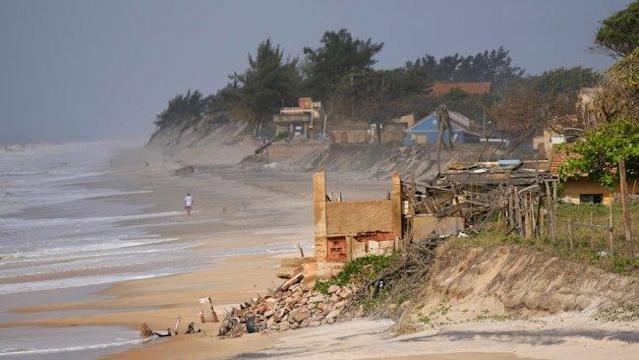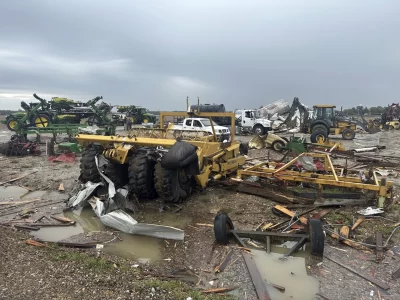
A once scenic coastal town has seen hundreds of homes consumed by the ocean. Climate experts say global warming is making the issue worse, but climate change is not the only factor causing this inexorable fate.
Climate change and coastal erosion have been the culprits behind many damaged shoreline properties in recent years, but the situation unfolding in a town near Rio de Janeiro is an entirely different fright.
Atafona, Brazil, is home to more than 6,000 residents and sits about 200 miles north of Brazil’s most famous beaches. Atafona was once a scenic coastal town but has become far more known for its destruction than its charm in recent decades.
Every year, the Atlantic Ocean swallows 6 more meters, or about 20 feet, of the town. Hundreds upon hundreds of houses have been devoured, transforming the picturesque coastline into “an underwater graveyard of wrecked structures,” according to AFP.
Resident José “Nenéu” Rosa has lived in the town his entire life and told National Geographic that the erosion has claimed three of the houses he once called homes, including the residence where he and his seven brothers were born.
In recent years, he has spent thousands of dollars on rocks to build a barrier in hopes of saving his current home.
“The sea isn’t wrong; it wants what belongs to him back,” Nenéu said in 2021. “It will swallow everything, but I’ll resist.”
According to climate experts, the town’s longtime suffering has been exacerbated by global warming. As sea surface temperatures rise throughout the world, heightened sea levels have sent more currents careening into the town’s coast.
But uniquely for Atafona, one more ingredient has contributed to the town’s worsening situation: water loss at a nearby river.
The Paraiba do Sul river, whose mouth sits in Atafona, is regarded as one of the most significant river basins in the country in terms of urban water supply. The 700-mile-long river provides water for more than 15 million people in 184 towns and cities.
However, due to consistent over-pumping, that water supply has shrunk in recent decades. The effects have been catastrophic.
João Siqueira, secretary-general of the Lower Paraíba do Sul Committee, told National Geographic that Rio de Janeiro consumes 44 cubic meters, upwards of 11,600 gallons, of water per second, but the river is pumped nearly four times more, at 160 cubic meters, over 42,000 gallons, per second, in order to meet all the other demands of the area, including diversion projects, mining and farming.







